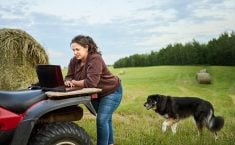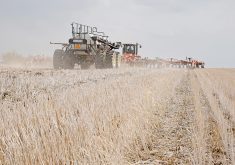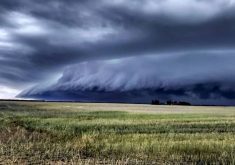An education is important for the new generations of farmers. There is a long list of the abilities that education helps to develop, such as making sound business decisions, running technology, applying appropriate agronomic practices and marketing This also provides a potential back-up plan or career to the farm.
As parents, what is the best way to start saving for this investment?
Two options to consider are a Registered Education Savings Plan (RESP) or compensating your child from your family farm. However, the new Tax on Split Income (TOSI) rules have made compensating your child through the farm much more restrictive.
Read Also

AgriStability updates offer stronger support for farmers
One of the most significant updates to the AgriStability program for the 2025 program year is the increase in the compensation rate.
RESP
RESPs are a popular investment tool that allow you to build an education fund for your child. When your child goes to college or university, an RESP can be drawn from to cover related expenses. From a tax perspective, an RESP should not be confused with an RRSP. Your RESP contributions are not tax deductible.
The tax advantages of an RESP are that money inside the fund will generate investment income tax-free and this portion will be taxable to your child when they draw from the fund. This allows the income to be taxed in the hands of your child when they are in school, which tends to be a much lower tax rate.
RESPs have no annual contribution limit but carry a lifetime contribution limit of $50,000 per child. If you choose an RESP, you can also take advantage of the Canada Education Savings Grant. This is a grant for 20 percent of your annual contributions, to a maximum of $500 per year ($1,000 if you did not use the grant in the previous year), and up to a lifetime maximum of $7,200.
What happens to your RESP investment if your child decides they do not want a post-secondary education? Properly structured plans allow you to change the beneficiary to another one of your children to pay for their post-secondary education.
If you have no children furthering their education, you can transfer up to $50,000 of RESP income to your RRSP if you have contribution room available to avoid tax. In this scenario, all grants received would be required to be paid back to the government.
Family Farm RESPs
Another option is gifting shares of your family farm corporation to your child when they turn 18. They then redeem these shares to fund their education and pay tax on the dividend at their low tax rate.
However, this is now more restricted due to TOSI rules. To use this plan, the child must be actively engaged on the farm. This means they must be working for the farm an average of 20 hours per week (minimum) when the farm operates, or meet that requirement for any five previous tax years.
If this is not the case, you may still pay your child a wage for work they have completed.
These plans can be complicated when considering what is right for you. It is key to consider these savings early in your child’s life. Consider talking to a professional adviser regarding the best plan for you to help fund your child’s education.
Colin Miller is a chartered accountant and tax partner in KPMG’s agri-business industry practice in Lethbridge. He can be reached at 403-380-5707 or by e-mail at colinmiller@kpmg.ca. He would like to thank Riley Honess and Payden Van Gaalen of KPMG for their assistance with writing this article.















